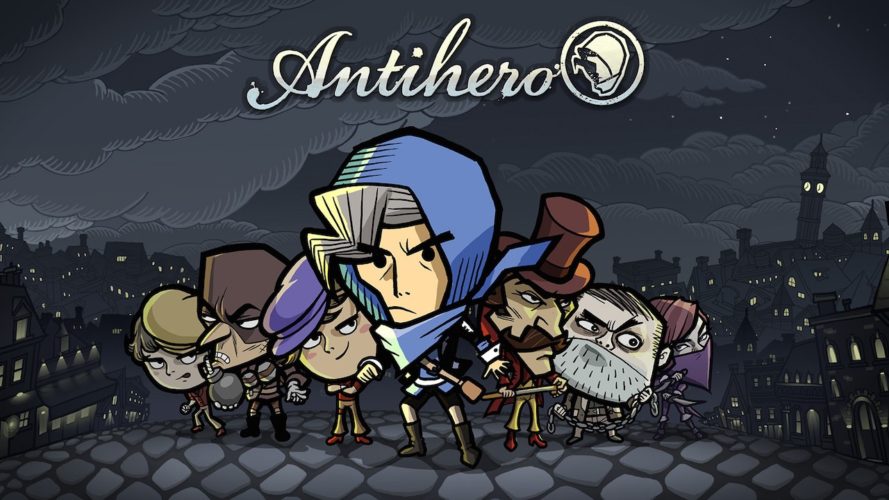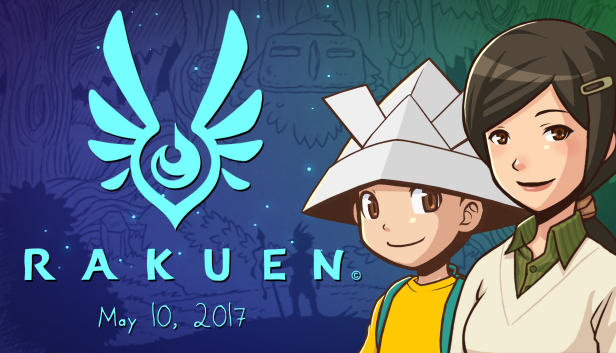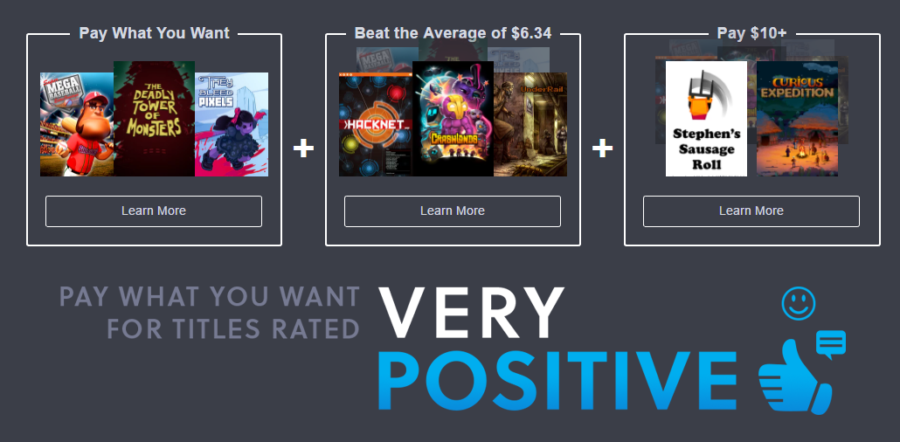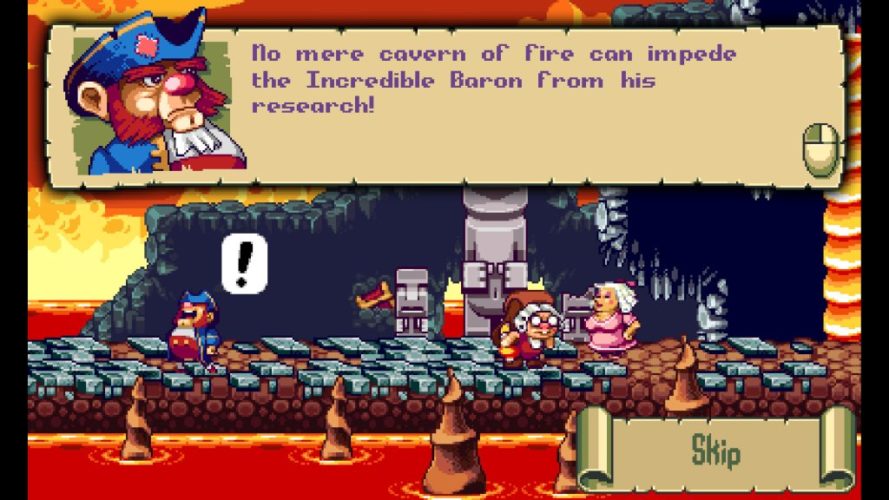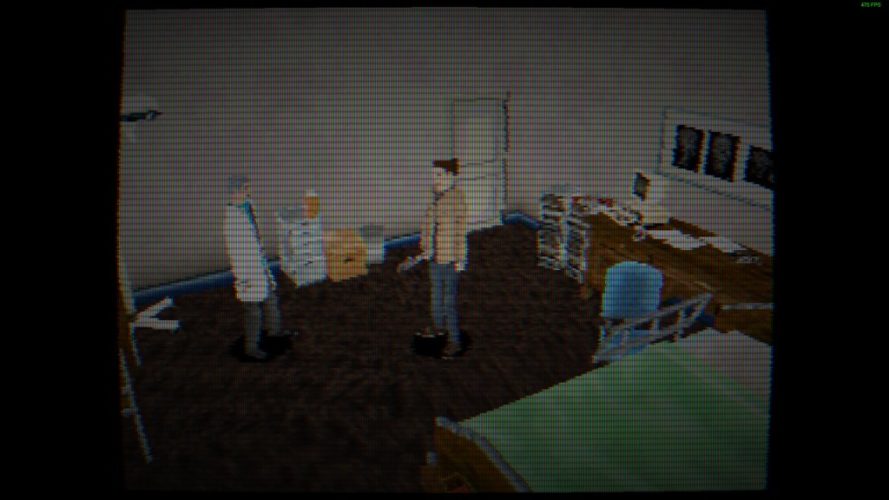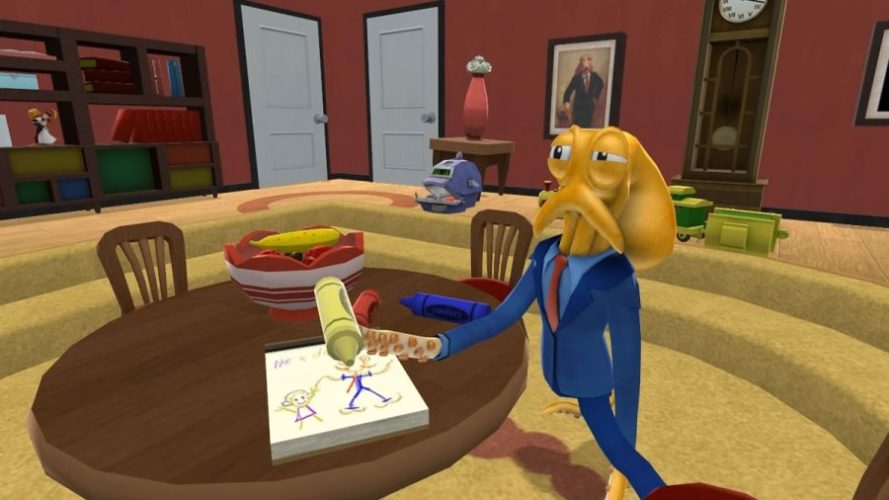Features
Explore The Breathtaking New World in Cradle: Indie Jones Presents an Interview with Mojo Game Studios
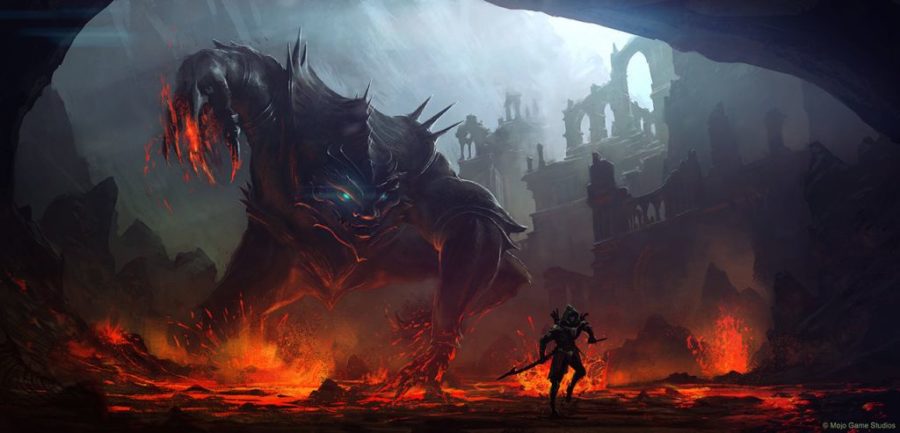
Welcome to the premiere of Indie Jones! Here, we delve into the minds of indie devs, uncovering the treasures their Kickstarter video games have to offer gamers.
Today, we pick the brain of Mojo Game Studios to learn more about their unique new fantasy RPG, Cradle. The Kickstarter intro video alone was enough to blow my mind; the graphics, music and atmosphere, enhanced by the Cryengine, brought this amazing new title to life. Naturally, I had to find out more.
Mojo Game Studios was kind enough to grant me an interview. The following is my conversation with Cradle crew:
1. At its core, what is Cradle?
A story.
When we came together and first decided to take on this project, and make a new kind of video game, we knew we wanted to create something more than a toy. We wanted to give the player a mature, immersive experience. And this fundamental goal goes a long way in influencing our design. To this end, Cradle is first and foremost a game dependent on your skill as a player, not the countless hours put into leveling up your character. Immersion is our top priority, and it governs how we approach almost everything, from combat to narrative to environments. We did this because we want the player to fully engage, heart, mind and skill, with every in-game experience. A big reason Cradle exists is to satisfy the adventurer that exists in all of us as gamers. Nothing should feel random or unnecessary; once you’re in Anora, nothing in-game should push you back out to reality.
2. There have been dozens of successful first person RPGs that have hit the market lately (Oblivion, Far Cry, Minecraft). What does Cradle do differently that makes it a unique experience for gamers?
Most games require a substantial amount of farming or grinding for a player to progress or level. Cradle gets away from this mechanic by making your progression through the game independent from the progression of your character. Now, this doesn’t mean that progressing your character isn’t necessary to beat the game. But because we combine this separation of progression with a non-linear storyline, and a flexible questing system, it allows for a greater degree of agency to remain with the player than is seen in other RPGs.
We know we’re far from the only game to promise that the player can “forge their own path” through our world. What games usually mean by this catchphrase though, is that they give the player a lot of choices, most of which just concern customization of skill trees or appearance. We take that promise much more literally, on the other hand, because choices simply aren’t the same as freedom, and true immersion comes from true freedom. In Cradle, you can only progress your character by exploring the world, not by spending a certain amount of time in-game or killing a certain number of enemies. To progress through the game, you’ll certainly want to strengthen and progress your character to facilitate tougher battles and greater rewards; but you could also hypothetically get through the entire game with nothing but a good deal of skill and creative strategies. We’re excited to see where our players go with that.
3. Something that is taken for granted in games is combat. In Cradle, it seems much thought and strategy is needed to be successful. Briefly explain the combat system.
Cradle’s Realfight Combat System is a new way to fight, developed by Mojo Game Studios to bring the player an unprecedented level of dynamic control in first-person melee combat. Realfight brings four main tweaks to traditional first-person melee combat as it’s implemented in games such as Skyrim or Chivalry:
Deterministic Combat Animations enable the player’s attacks to change based on which part of the enemy’s body is targeted. In other words, where you aim to attack on your opponent determines which attack your character executes. Because these choices vary by weapon, but are the same from enemy to enemy, this system is easy to learn and intuitive to use. Simply by aiming and clicking the left or right mouse button, you are able to choose in real time where and how you will strike.
Order determinism allows for smoother chaining of melee attacks; where you last struck has an effect on how the next attack will play out. If you have a sword and want to do a slash right at the torso of an opponent, followed directly by a slash left, simply aim at the right torso and click the right mouse button, then aim at the left torso and click the left mouse button. The result is a continuous slash to the right and back from the left. This system adds fluidity and reactivity to our combat.
Weapons and weapon weight also factor into Cradle‘s Realfight system. Each weapon is designed to have different strengths and weaknesses in combat, which is something not usually captured in first-person melee combat as far as their effects on blocking, dodging, or interrupting enemy attacks. For example, a player cannot successfully block a heavy mace with their own small dagger, nor could they hope to make a dent in a heavy shield using a short sword. The beauty of this system is that there is no restriction on the player from attempting these moves; but the fundamentals of the physics, momentum, and other aspects of real-life weaponry are present to build their intuition for what works, and what doesn’t; what to compensate for, and what to exploit.
Likewise, another layer of realism is added through proximity determinism. Essentially, when a player is too close to an opponent to accurately swing their weapon, they will push off from their enemy in order to reposition themselves on the battlefield. These push-offs will also be deterministic, according to where the player aims and which weapon they are using. What this improves upon, in traditional melee games, is the inconvenience of being unable to reposition without interrupting the flow of combat.
4. It’s no secret that open world, fantasy RPGs can bog players down with seemingly infinite tasks and missions. How does Cradle keep the player’s attention with this aspect of the game?
Every quest is meaningful, and has a tangible effect on the game and its outcome, as well as your playing. Ideally, players will never feel bogged down because the reward will always be worth the task.
Many hours were put into constructing a history, a culture, and a context for the world of Anora and its inhabitants. We chose to invest so much energy towards these things to make the world feel worth exploring – and questing through.
Likewise, we handle questing in a way that leaves greater freedom to the player in how they want to pursue them, prioritize them, or choose whether to do them at all. Essentially, Cradle gives the player vital clues about the world, then leaves it up to him or her to explore and solve mysteries. We depart from the more traditional “quest log”, or something that keeps track of the player’s progression through a set of tasks. Instead, players will have a journal of information to track progress on various adventures, and will receive new quests from NPCs, artifacts, or the discovery of concealed areas.
5. Cradle sounds very ambitious. It’s obvious much time has been taken to develop the world of Aderyn. What were some challenges you faced while creating the game? Did you have to exclude some things during development?
One of the biggest time costs in making a game is rework. Time and again designers come up with new, and often better, ideas that need to be added to the game, only to have these ideas cause a ton of unintended alterations to other aspects of the game. These changes to the game ultimately necessitate rework, and a lot of lost time. In contrast, we approach game design from an extremely top down view, which makes for an unconventional development strategy. To be honest, I don’t think this project would be remotely possible without our novel approach. So far, our way of developing and designing has lead us to very little or no rework and I’m confident that our approach will continue to provide such results.
At the heart of Cradle is the goal to create a fast-paced, skill based game, full of exploration and adventure. Anyone familiar with game design practices, however, understands the challenges currently faced by game developers both big and small in bringing a project like this to fruition. Part of the mission of Mojo is to solve some of these problems, particularly when it comes to design.
6. The CryEngine has been known to enhance environments in video games to the most minute detail. Were you able to have your dynamic environments “tell a story” using this engine?
Absolutely. Our decision to use CryEngine is grounded in the idea that we want to capture the beauty of the natural world, and use it to evoke wanderlust and thirst for adventure in our players. To do this, we wanted the most graphically advanced solution available. CryEngine also allows us to create seamless open worlds using voxel terrain sculpting.
Albeit a challenge to work with, CryEngine has indeed been sufficient for our needs after the additions made by our programming team.
7. Will there be online multiplayer in Cradle? If so, what are your plans for this mode?
With Cradle we plan to feature both cooperative and competitive multiplayer modes. For now, we intend to release multiplayer modes as DLC (downloadable content) after the game’s initial release. However, with enough funding, we would be able to both produce and integrate the mode(s) in time for the main release.
8. What are some games, movies or other forms of media that influenced the creation of Cradle?
Hexen – Nonlinear, environmental storyline.
Starcraft – Easy-to-learn systems, but intricate and hard to master.
Shadow of the Colossus and Journey – Compelling story and emotional narrative, general tone
Halo – Fluid, dynamic, skill based, sandbox-style combat.
Far Cry 3, The Elder Scrolls V: Skyrim – Expansive, explorable open worlds.
Doom, Quake – Observation-based secrets.
Guild Wars 2 – Level design, environmental tie to gameplay rewards, jumping and environmental puzzles.
Dark Souls – Player agency at the heart of gameplay.
Gears of War – Epic scale, humanity is depending on you whether they know it or not.
As well as the works of Hayao Miyazaki, specifically Princess Mononoke and Spirited Away.
9. The mechanics and gameplay in Cradle seem to favor hardcore gamers. Are you worried this game may be too complex for casual gamers to jump into?
It’s true that we have been promoting our combat system as one of our groundbreaking features, that will be unique to Cradle. It’s certainly true that part of its purpose is to add more strategy to first-person combat, which at first glance could seem to shut out players who aren’t even familiar with the simpler first-person combat experiences that already exist on the market. However, gamers will never be forced to make complex decisions in real time. The decisions made are meant to be intuitive rather than calculated, so there’s no particular reason why a casual or new gamer would have more difficulty picking up the system and being successful in their campaign. Furthermore, the learning curve of our system is designed to be similar to Starcraft in that it is easy to learn, yet challenging to master. This, combined with the sliding challenge scale we plan to implement, allows casual gamers to jump right into the game and facilitate both their initial learning and eventual mastery by controlling the pace of their experience.
10. When will Cradle be available for fans to enjoy and for what platforms?
We plan to release Cradle on PC and Linux platforms in Summer 2016.
And there you have it, folks! I’d like to once again thank everyone from Mojo Game Studios for a great interview. I feel we have all learned a little more about this new title and are excited to get our hands on it. Follow the link here and support the Kickstarter campaign. Track the games progress via Mojo Game Studio’s official website. Trust me, you’ll be amazed at what you see. You have 11 more days to contribute; let’s bring this game to life with our support.
Can’t get enough of this amazing fantasy RPG? Check out the trailer and screenshots below for more. Come back again next week for more from Indie Jones!
Featured
Horse Racing Games For iOS

Horse racing is a globally spread sport with billions of fans worldwide. The thrills of the races and the excitement of the betting make horse racing quite popular among adrenaline rush seekers.
However, unlike other sports like football or basketball that you can actually try in your backyard, becoming a racehorse rider is out of reach for most people. But all hope for our fellow race lovers is not lost and the gaming world comes to the rescue.
We are talking about horse racing simulation games where you can pick or breed your own horse, participate in online racing tournaments, earn prestige, take care of your horse, and much more.
Horse racing video games are perfect when it comes to getting the bigger picture of the sport and familiarizing yourself with other aspects apart from racing, like stable management, breeding, and finance management.
On top of that, horse racing video games can help you understand how the sport works, which may help you with the next bet you make on TwinSpires.
Fortunately, there are plenty of horse racing games for iOS, and in today’s article, we will highlight some of the best that you should try.
Rival Stars Horse Racing
This is a game made by a legendary horse race video game developer called PikPok and it is without a doubt one of the best horse racing games available for iOS right now.
The graphics look incredible for a mobile game. They are quite realistic, and the horse movement and the design of the tracks also give you the feel that you are participating in a real-world race.
Rival Stars Horse Racing has quite a fast pace, where you can complete some quests and upgrade your stable, but the focus is on the races, as it should be.
When we talk about the racing part of the game, every racetrack that you unlock offers something new. You get to race at different lengths and surfaces. But let’s focus on the important part, race mechanics.
You can steer the horse, brake, and activate their sprint ability. The horse’s performance is based on multiple factors such as ground consistency, position, race length, previous races, and much more.
Rival Stars Horse Racing also has a quite good breeding, training, and managing system. On top of that, there are many different horse coat colors and breeds. Unlike other games like Zelda where you can get a gold horse, Rival Stars Horse Racing focuses on realism. All of the horses have natural coat colors and traits.
You get to collect or breed horses, transform foals to feed, and upgrade facilities to unlock more options to progress.
The only thing that is missing from the game is the audience on the races since the race courses feel a bit empty with nobody around.
Horse Racing Manager 2024
This is a game that has a rather different approach than Rival Stars Horse Racing. It is focused more on the managing part of horse racing rather than on the actual gameplay and racing. You are in control of your business operation and your goal is to succeed in the world of horse racing and earn money.
You don’t have an impact on the races, and you cannot control your horse. The races are simulated, and the outcome depends on your horse’s stats and abilities.
That’s why horse training, and breeding a champion horse play a really important role in the game.
The best thing about Horse Racing Manager 2024 is the ability to race online. There are live PVP races that occur every 5 minutes and everyone can participate in them.
This is the perfect game if you want to learn what’s happening behind the curtains of horse racing as a sport. You are in control of your breeding rights that you can sell, as well as the age and career path of your horse.
It is an interesting game, especially for those who are not afraid of data and analysis.
iHorse Racing
This is a similar game to Rival Stars Horse Racing but with worse graphics, and fewer options. This game has multiple features like horse training, stable management, horse auction, race entries, CLU-jockey hiring system, and world jockey ranking, and you can connect your Facebook profile to invite friends.
To be honest, the graphics and gameplay of the game are fun and engaging, but I’d still go for Rival Stars Horse Racing, especially if you like a more realistic horse racing game.
Pocket Stables
Let’s drop down all the realism and focus on some retro 2D gameplay. For all retro game lovers who have a passion for horse racing, Pocket Stables is just the perfect game. At first glance, this game might look simple, but it actually has many features that make it even more fun.
For starters, you can build training facilities where you can increase your horse’s stats. Additionally, not all horses are the same and your goal should be to find a horse with the right balance of speed, stamina, and intensity.
As you win races, you’ll receive prizes, that can be used to upgrade your stable and give you better ways to breed a faster horse.
It’s fun, casual, and quite cute. Plus, you get to build your horse racing community and hire people that will take care of your stable.
Features
Exploring k2.vox365: Revolutionizing Digital Communication and Collaboration
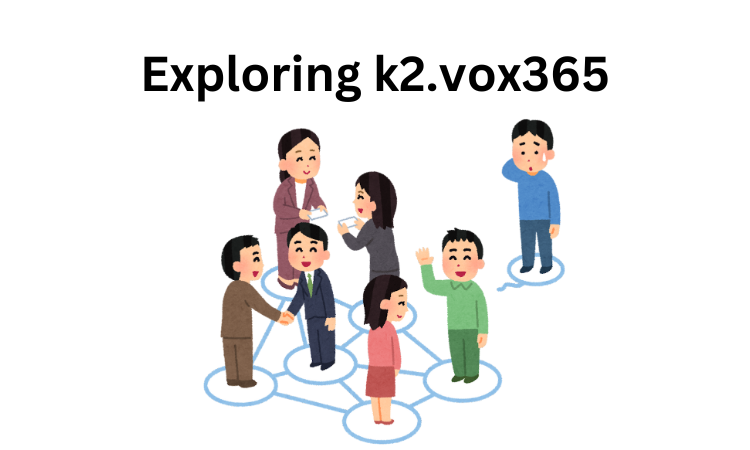
In today’s fast-paced digital world, businesses and individuals alike are constantly looking for efficient ways to communicate and collaborate. Enter k2.vox365, a powerful platform designed to streamline communication, enhance collaboration, and boost productivity. With its comprehensive suite of tools, k2.vox365 is rapidly becoming a preferred solution for businesses, educational institutions, and remote teams looking to stay connected and organized.
What is k2.vox365?
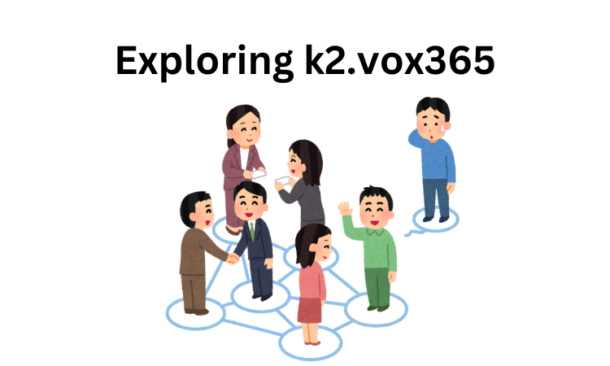
At its core, k2.vox365 is a unified communication and collaboration platform that brings together messaging, video calls, and project management into one seamless experience. Unlike traditional tools that require switching between different apps for emails, chat, and file sharing, k2.vox365 integrates all these features into a single, easy-to-use platform. This all-in-one solution reduces complexity and makes communication more efficient for teams of all sizes. Since its inception, k2.vox365 has gained traction for its robust functionality and user-friendly interface, positioning it as a strong competitor in the digital communication space.
Core Features of k2.vox365
A. Unified Messaging
One of the standout features of k2.vox365 is its unified messaging capability. The platform allows users to manage all forms of communication — whether it’s emails, instant messages, or video calls — from one place. Users can easily transition between messaging modes without the hassle of switching between apps. This is especially beneficial for teams who need real-time communication but also rely on email for formal exchanges.
B. Collaboration Tools
In addition to communication, k2.vox365 offers a suite of collaboration tools that help teams work together effectively. Whether it’s real-time document editing, file sharing, or managing tasks and projects, k2.vox365 enables seamless collaboration across departments. Teams can work on the same document simultaneously, leaving comments, making changes, and tracking progress all in one place, reducing the need for endless email chains or disjointed software solutions.
C. Cloud-based Accessibility
With cloud-based accessibility, k2.vox365 ensures that users can access their work from any device, at any time. Files, messages, and projects are all stored securely in the cloud, allowing for easy access whether you’re in the office or working remotely. This also means that data is continuously backed up, minimizing the risk of losing important information due to technical failures.
How k2.vox365 Enhances Business Productivity
One of the biggest benefits of k2.vox365 is its ability to boost business productivity. By consolidating communication, collaboration, and project management into one platform, teams can work more efficiently. The unified approach reduces downtime spent switching between apps, looking for files, or chasing down project updates. This streamlined workflow allows employees to focus on what truly matters: delivering results. Furthermore, the real-time collaboration tools improve team coordination, ensuring everyone stays on the same page.
Security and Data Protection in k2.vox365
In an age where data breaches and cyber threats are rampant, k2.vox365 prioritizes security and data protection. The platform uses end-to-end encryption to ensure that all communication, whether it’s messaging, video calls, or file sharing, remains secure. Additionally, k2.vox365 complies with important data privacy regulations, such as GDPR, offering peace of mind to businesses concerned about safeguarding sensitive information. The platform also includes advanced measures to protect against phishing attacks and malware, ensuring a secure communication environment for all users.
Industry Applications of k2.vox365
k2.vox365 is not just for businesses. Its versatility makes it an excellent choice for a variety of industries:
A. Corporate Environments
In corporate settings, k2.vox365 is used to streamline internal communication and project management. Its integrated tools allow departments to work more efficiently, keeping track of tasks, deadlines, and project progress. The platform’s unified messaging system also makes it easy for team members to stay in constant communication, regardless of their location.
B. Educational Institutions
For educational institutions, k2.vox365 provides a seamless way to support virtual learning. Teachers and students can communicate through video calls, share files, and collaborate on assignments in real time. The platform’s task management tools help students stay organized, ensuring that assignments are completed on time.
C. Remote Work
With remote work becoming the norm, k2.vox365 plays a crucial role in enabling teams to stay connected no matter where they are. Its cloud-based services ensure that employees can access files and communicate with colleagues from any device, making it a perfect tool for global teams and freelancers who need to collaborate across time zones.
Comparing k2.vox365 with Competitors
When compared to other popular platforms like Microsoft Teams, Slack, or Zoom, k2.vox365 holds its own. While Microsoft Teams and Slack are well-known for their chat-based collaboration, k2.vox365 excels with its broader set of features, including unified messaging, integrated project management, and cloud accessibility. Zoom, a leader in video conferencing, offers a more limited scope compared to k2.vox365’s full suite of tools. The strength of k2.vox365 lies in its ability to combine multiple communication channels into one platform, giving it an edge over these single-function competitors.
User Testimonials and Case Studies
Many businesses have seen tangible benefits after adopting k2.vox365. For instance, XYZ Corporation, a mid-sized tech company, reported a 20% increase in team productivity after switching to the platform. The real-time collaboration tools helped employees reduce delays and stay better aligned on projects. Similarly, ABC University found that k2.vox365 significantly improved communication between students and faculty, especially during the shift to remote learning.
Pricing and Subscription Plans
k2.vox365 offers flexible pricing tailored to different business needs. For small businesses, there’s a basic plan that includes essential features like messaging and file sharing. Larger enterprises can opt for more advanced plans, which offer additional features like enhanced security, advanced project management tools, and increased cloud storage. There are also customized plans for educational institutions, allowing them to access the platform’s full suite at a discounted rate.
Future Prospects for k2.vox365
The future looks bright for k2.vox365. The platform’s developers are continuously working on new features, including AI-driven productivity tools and more advanced security protocols. As businesses continue to shift towards digital solutions, k2.vox365 is poised to become a leader in the communication and collaboration space. With plans to expand its global presence, the platform is set to make a significant impact in the market in the coming years.
Conclusion
In conclusion, k2.vox365 is an innovative platform that provides a comprehensive solution for communication and collaboration. With its unified messaging system, real-time collaboration tools, and cloud-based accessibility, it is designed to help businesses, educational institutions, and remote teams stay connected and productive. As digital communication continues to evolve, k2.vox365 is well-positioned to lead the way, offering the tools and features necessary for success in today’s fast-paced world.
Casual
Creative Ideas for Best Technology Instagram Post 2024

Are you facing difficulty in engaging your audience with tech posts on Instagram? As social media platforms have transformed into virtual marketplaces, brands recognize the need to showcase expertise through engaging content.
Platforms like Instagram empower connecting with worldwide audiences through captivating visual stories. But, it is quite a daunting task to work and many move ahead to buy Instagram followers as well.
Contemporary consumers scarcely have time for promotion lacking substance. Hence, creatives demand integrating education with entertainment for intrinsically motivating connections. This is why in this post, we discuss top ideas for your tech-posts on Instagram. Read on.
Top Instagram Post Ideas for Technology in 2024
There are many creative and unique ways to catch attention for your technology posts on Instagram. Below we discuss some of the most popular ones that can certainly get all eyes on you.
I. Using Tech Products as Props
Showcasing the ergonomic elegance of newest smartphones through lifestyle photos depicting them harmonizing with modern interiors signifies how technologies enhance lives unobtrusively.
Flat lays carefully arranging phones alongside complementary gadgets like smartwatches and earbuds exhibits compatible accessories apt for varied tasks. Close-up shots exploring interesting details on laptops or cameras from unique angles pique curiosity towards innovative engineering.
Illustrations envisioning people multitasking efficiently through integration of different devices tells stories audiences relate to. Including props within realistic settings displays practical applications beyond technical specifications.
II. Behind the Scenes Photos of Tech
Sneak peeks hinting at cutting-edge features of anticipated device launches grant exclusivity while cultivating hype. Well-lit workplace photographs portray engineers concentrating on prototyping components and inspire admiration.
Snapshots capturing programming teams collaborating wirelessly on interactive whiteboards through mobile apps demonstrate streamlined productivity. Infographics adorning clean designs simplify explaining complex algorithms behind facial recognition or data analytics in accessible language.
Short videos taking viewers inside futuristic factories reveal meticulous manufacturing processes with a sense of intimacy.
III. Infusing Tech with Humor
Lighthearted memes humorously portraying predictable reactions to everyday tech troubles provide comic relief to stressful scenarios. Relatable situations humorously presented divert from serious sales pitches.
Personified tech objects in comical misadventures amuse audiences through humanizing technology. Satires skewering society’s obsession with smartphones in a tongue-in-cheek manner encourages shares to spread smiles. When infused judiciously, humor aids connection by sparking emotions beyond sales.
IV. Showcasing the Human Side of Tech
Introducing changemakers through portraits celebrating their groundbreaking work nurtures admiration. Profiles highlighting individuals transforming lives through accessible education technologies promote empowerment.
Environmental initiatives leveraging automation to offset carbon footprints brings a humanistic face to sustainability efforts. Impactful community projects excelling through connectivity showcase technology uplifting society versus solely profit motives.
Sensitively showcasing stories of overcoming challenges strengthens bonds between brands and audiences.
V. Visual Presentations of Tech Topics
Creative arrangements of flat lays showcasing virtual or mixed reality controllers provides an experiential feel of the immersive tech itself. Sequential photos arranged like puzzle pieces or in grids present complex technical concepts through visual storytelling.
Infographics leveraging minimalist aesthetics simplify explaining blockchain or cloud computing. Illustrations personifying IoT appliances in a “day in life” routine brings relatability to innovations perceived as complex. Data visualizations comparing tech trends succinctly impart industry insights.
VI. Leveraging Trending Tech Themes
Imaginative demonstrations of artificial intelligence streamlining lives pique intrigue towards groundbreaking research. Showcasing developments in robotics, VR or internet of things solving pressing issues cultivates social purpose beyond sales.
Highlighting startups leveraging cutting-edge innovations attracts investors and talent. Curated reels condensing key takeaways from tech summits grant exclusive access. Tactical hashtags around concepts ranging from 5G to cybersecurity optimize discovery of relevant audiences worldwide.
Unique Ways To Boost Engagement
With competition so fierce, it becomes difficult to keep your audience engaged with your post. Below we discuss some essential tips that can make things easy for you. Take a look:
● Researching Optimized Hashtags
Analyzing hashtag clusters witnessing frequent usages around niche conversations aids discovering appropriate tags aligning with targeted audiences. Careful hashtagging aids discoverability and spreads messages to receptive crowds naturally.
● Optimizing Images For Social Formats
Adjusting photos to square dimensions suitable for Instagram feeds and story formats preserves visual quality and context. Proper sizing and cropping focuses viewer attention on essential elements.
● Scheduling Around Peak Engagement Timings
Identifying timing patterns of highest follower activities through analytics aids posting when most eyeballs will likely notice new updates. Repurposing top performing content as story highlights retains visibility.
● Reviewing Engagement And Follower Insights
Regularly evaluating metrics like likes, comments, saves and follower growth rates aids comprehending reception and refining strategies. Tracking identified hashtag or location based communities’ interests guides customized content.
● Partnering With Key Influencers
Reaching wider audiences through cross-promotional shoutouts with popular domain figures expands networks. Collaborations establishing brand authority through third party endorsements bolster credibility.
Final Thoughts
In summary, effectively leveraging visual creativity fueled by data-driven decisions establishes technology companies, alongside support from a dedicated social media growth agency like Thunderclap.it, as thought leaders amid competition on platforms like Instagram.
Consistency, authenticity, and nurturing communities through meaningful interactions are crucial for driving organic visibility and achieving superior returns on social media. While maintaining technical excellence is essential, emotionally connecting with audiences through social missions and humor helps build a loyal following and fosters trust in this experience-driven world.
-

 Guides5 years ago
Guides5 years ago6 Proven Ways to Get more Instagram Likes on your Business Account
-

 Mainstream10 years ago
Mainstream10 years agoBioWare: Mass Effect 4 to Benefit From Dropping Last-Gen, Will Not Share Template With Dragon Age: Inquisition
-

 Mainstream6 years ago
Mainstream6 years agoHow to Buy Property & Safe Houses in GTA 5 (Grand Theft Auto 5)
-

 Casual2 years ago
Casual2 years ago8 Ways to Fix Over-Extrusion and Under-Extrusion in 3D Printing
-

 Mainstream12 years ago
Mainstream12 years agoGuild Wars 2: The eSports Dream and the sPvP Tragedy
-

 Guides10 months ago
Guides10 months agoFree Fire vs PUBG: Comparing Graphics, Gameplay, and More
-

 iOS Games2 years ago
iOS Games2 years agoThe Best Basketball Games for IOS
-

 Gaming News1 year ago
Gaming News1 year agoSwiping, Tapping, and Tilting: How Mobile Games Are Played Today

